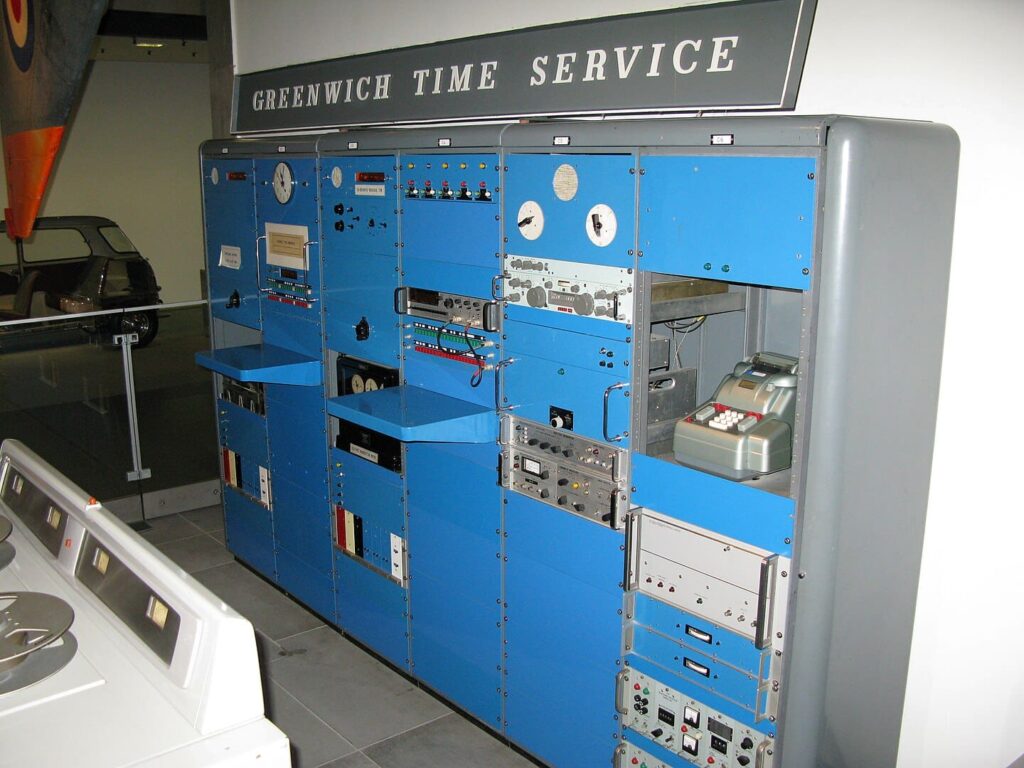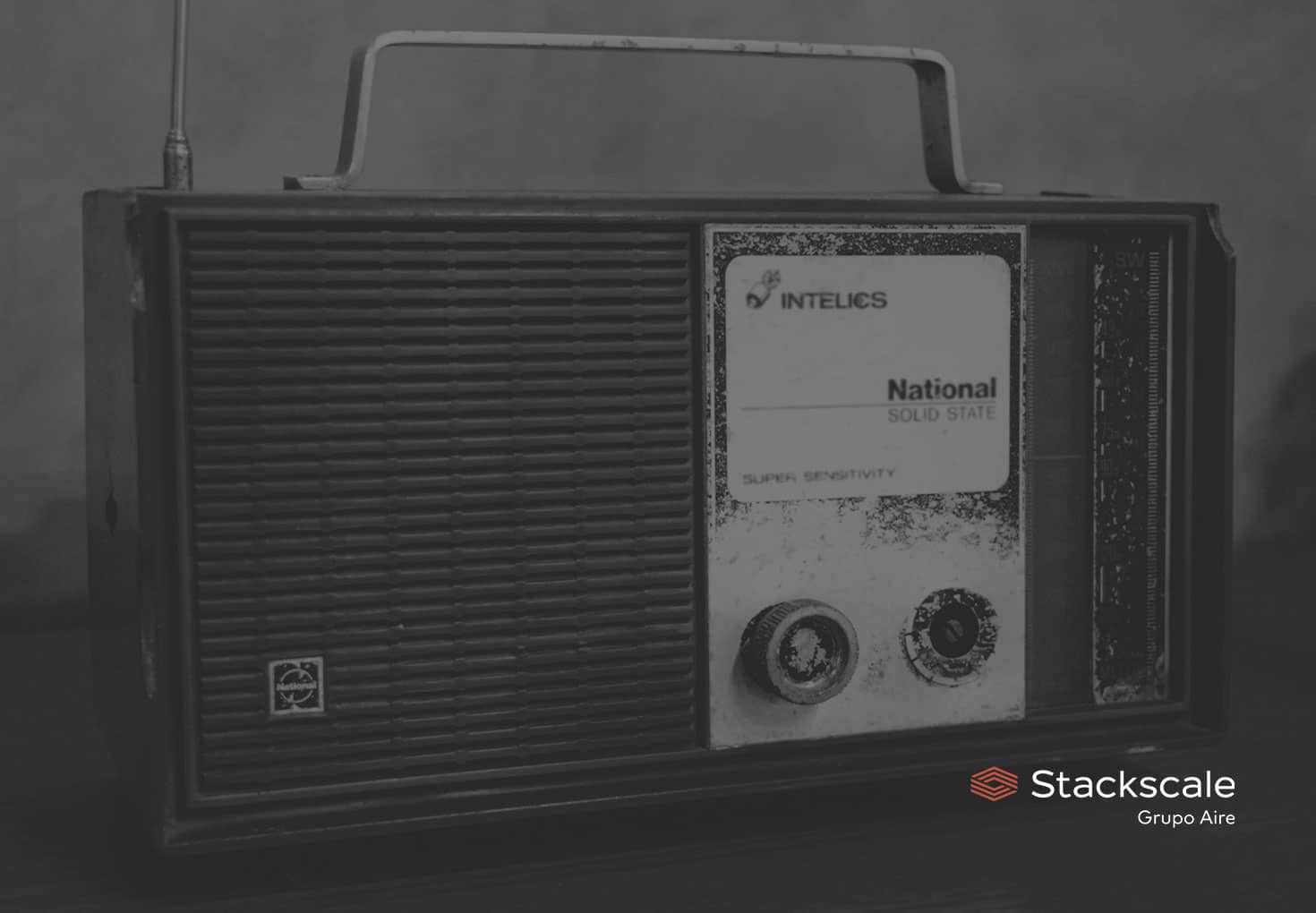In a world where technology is advancing by leaps and bounds, few systems have been around as long as the Greenwich Time Signal (GTS) and popularly known as “the PIPs” of radio. This system, which marks time accurately through a series of beeps, celebrates one hundred years of existence. Since its introduction in the 1920s, the time signals have evolved along with technological advances, becoming a symbol of accuracy and reliability.
Table of contents
The origin of “PIP”: Precise time stamping
The history of time signals, popularly known as “PIPs” or “the PIPs”, began in 1924, when the British Broadcasting Corporation (BBC) implemented a system to provide accurate time to its listeners. At a time when radio was consolidating its position as the primary means of mass communication, time accuracy became a fundamental necessity. To this end, the BBC collaborated with the Royal Observatory at Greenwich, the world reference for the Greenwich Meridian (GMT), to create a system that would meet this demand.
The “PIPs” consisted of a series of six beeps, emitted in the five seconds before the time and at the start of the new time. Each beep is a 1 kHz tone, with the first five lasting a tenth of a second, and the sixth, longer one lasting half a second. The last beep is the one that marks the exact moment when the time changes. This system not only provided an accurate time reference, but also unified the listeners, allowing them to be synchronized at the same instant, regardless of their geographic location.
The creation of the “PIPs” was the idea of the Astronomer Royal, Sir Frank Watson Dyson, and the then director of the BBC, John Reith, who commissioned Marconi/Siemens to develop the system. Harry Lampen Edwards, a young 18-year-old engineer, was commissioned to build the mechanism in conjunction with Greenwich Observatory. Initially, the “PIPs” were controlled by two mechanical clocks at the observatory that sent a signal every second to the BBC, converting it into the tone that was transmitted.

In 1957, the Royal Observatory at Greenwich moved to Herstmonceux Castle and the Greenwich Time Signal equipment was modernized with an electronic clock, which improved its reliability. This technological evolution guaranteed the continuity of the service, even in the event of failures, by means of leased lines that ensured the transmission of signals to the BBC.
Interestingly, the time signal was the first sound heard during the handover ceremony to the London 2012 Olympic Games, at the closing of the Beijing 2008 Games. Also, on the 90th anniversary of the “PIPs”, the BBC’s Today program performed a special version of “Happy Birthday” using the time signal as the basis.
This time signal system has endured for nearly a century and, although technology has advanced, “PIPs” remain a symbol of the importance of time accuracy in broadcasting.
How do the time signals work?
The operation of time signals is based on the precision of master clocks. Originally, these clocks were based on astronomical observation, but over time, they were replaced by quartz clocks and, more recently, by atomic clocks, which offer unprecedented accuracy.
When signals are broadcast over the radio, they are designed to reach listeners exactly the second the new time starts. Although analog radio transmits these signals almost instantly, digital transmissions and the Internet can introduce a slight delay, which poses a challenge today.
Structure of time signals
This time signal or “PIP” consists of six short beeps that occur in the five seconds preceding the exact time and during the beginning of the new period. Each beep is a 1 kHz tone, with a specific duration: the first five beeps last for one tenth of a second, while the last one lasts for half a second. The exact moment when the time changes is marked by the last beep.
On exceptional occasions, such as when a leap second is added just before midnight, a seventh beep is emitted. In this case, the first beep is heard at 23:59:55, followed by the sixth short beep at 23:59:60, before the long beep marking 00:00:00. This phenomenon explains why the last beep is longer than the others.

In addition, although these signals are primarily associated with the hour on the hour, they are also broadcast at the 15th, 30th and 45th minutes of each hour, providing listeners with accurate synchronization at multiple times of the day.
Technological evolution of “PIPs
Over the years, time signals have evolved from a simple time reference to a symbol of stability. As technology has evolved, so have the methods for generating and transmitting the signals. With the advent of atomic clocks, accuracy increased, allowing radio stations to provide more accurate time signals.
With the digitization of radio and the growing popularity of Internet broadcasting, the challenge has been to maintain that accuracy in an environment where transmission times can vary. However, time signals remain critical in systems that require precise timing, such as financial systems and aviation services.
A cultural and technological legacy
Beyond their technical function, time signals have left a mark on popular culture. For decades, listeners to the BBC and other broadcasters around the world have relied on “PIPs” to tell the exact time. For many, listening to the beeps on the radio is a daily ritual that evokes a sense of order and reliability. Even in times of crisis or change, the time signals have remained a symbol of continuity.
In the technological realm, time signals have served as an example of how a seemingly simple technology can evolve and adapt over the years. Although transmission methods have changed, the original purpose of “PIPs” remains the same: to provide an accurate and accessible time reference.
The future of time signals in the digital era
With the advancement of digital technologies and the increasing adoption of online services, some experts have raised the possibility that time signals may become less relevant in digital media. However, they remain a key tool in industries where accuracy is vital. Time signal-based systems still play a crucial role in industries such as shipping, aviation and financial services.
In addition, time signals continue to be used by broadcasters around the world, from local radio stations to international broadcasts. Although new challenges may arise in the digital age, time signals are likely to continue to evolve to keep up with technological and social demands.
Time signals in other parts of the world
Over the decades, time signals have become a reference used by broadcasters around the world, adopting variants of the BBC’s Greenwich Time Signal (GTS) or similar systems. These signals mark the start of the hour with different tones or frequencies, and although the format may vary between countries and broadcasters, their purpose is always the same: to provide listeners with an accurate time reference.
In many cases, both public and commercial broadcasters have adapted the BBC’s six-tone system, while others have shortened the number of beeps to five, four or even three. Here are some examples of how time signals are used in different parts of the world:
- Argentina: News and talk stations, such as Radio Nacional, Radio Mitre, and Radio Continental, broadcast six beeps every hour, similar to those of the BBC, and three beeps on the half hour, in a tradition reminiscent of that employed in Catalonia.
- Australia: ABC Radio National and ABC Local Radio broadcast six-tone hourly time signals at 735 Hz, each lasting half a second, followed by half a second of silence.
- Brazil: Some news stations such as Radio Bandeirantes or Radio Guaíba broadcast hourly signals every 15 minutes, with five or four beeps, respectively.
- Canada: Until October 2023, the National Research Council of Canada’s Time Signal Service broadcast a daily signal at 12:00 on Radio-Canada Première and at 13:00 on CBC Radio One, the longest running time signal in the country.
- China: National radio stations emit five short beeps of 800 Hz followed by a longer beep of 1600 Hz to mark the start of the new time.
- France: France Inter broadcasts four beeps every hour, the last one marking the time o’clock, while some local stations of the France Bleu network also transmit time signals.
- Germany: Deutschlandfunk broadcasts three beeps every hour, the last one being the longest. On weekdays, they broadcast hourly signals every half hour between 05:00 and 18:00.
- Israel: The public radio station broadcasts five tones to count down the seconds before the hour, accompanied by a jingle that ends with the station’s sound identification “Kan”.
- Italy: RAI stations use six tones to mark the exact time, with a variation between Radio 1, Radio 2 and Radio 3 in terms of time and frequency of broadcast.
- Japan: NHK used to broadcast three short beeps followed by a longer beep just before the start of news programs.
- New Zealand: RNZ National uses six beeps every hour, plus a birdsong sound before the 07:00 and 09:00 news.
- Spain: Almost all stations, both music and non-music, broadcast time signals. Some stations, such as Los 40 Principales, customize the beeps with musical effects to create a corporate jingle.
This diversity of systems around the world demonstrates how the original idea of the GTS has been adapted to local needs, while maintaining the same objective: to offer listeners a reliable tool to synchronize with the exact time, no matter where they are.
Who keeps the Internet clocks on time?
Time synchronization on the Internet is crucial for the functioning of the network, and this is achieved thanks to systems based on atomic clocks. One of the pioneers in this field is physicist Judah Levine, who in 1993 implemented the time distribution service on time.gov, allowing precise time synchronization on Internet-connected devices.
The Network Time Protocol (NTP), designed in 1985 by David L. Mills, is the oldest active protocol that manages this synchronization, used in millions of devices. In addition, NIST is in charge of maintaining the “official time” by means of atomic clocks that guarantee incredible precision: they only gain or lose one second every 300 million years.
This system responds to more than 150,000 queries per second, which equates to about 16 billion queries per day. To handle this enormous demand, services such as Pool NTP help distribute the load among more than 4,000 servers worldwide, ensuring that all devices can be kept in sync as accurately as possible.
Conclusion: A Century of Accuracy and Reliability
Radio time signals are celebrating one hundred years of accurate timekeeping, having become an essential part of the radio experience. What began as a simple technical necessity to synchronize listeners in 1924 has evolved into a symbol of accuracy and technological tradition. In an ever-changing world, “PIPs” remain a reminder that some technological solutions, however simple they may seem, can endure over time, adapting without losing their essence.
This legacy, which combines both technology and culture, is proof of how seemingly simple advances can have a lasting impact. Over the course of a century, time signals have not only set the pace of everyday life, but have also accompanied technological progress, proving that in a fast-paced world, accuracy and reliability remain invaluable.
Today, while atomic clocks and protocols such as NTP (Network Time Protocol) ensure accurate time on the Internet, the tradition of synchronizing time remains essential. NIST and servers such as time.gov are responsible for keeping network clocks synchronized with maximum accuracy, thanks to ingenious systems connected to atomic clocks. Like radio time signals, these advances continue to ensure that accurate time remains a constant in our digital lives, proving that time synchronization, whether via radio waves or the Internet, remains a fundamental pillar of technological evolution.
References: Wikipedia, Curious Minds and The Pip.




